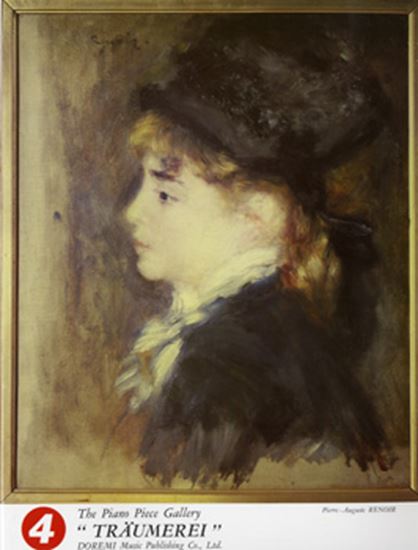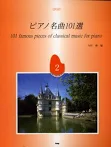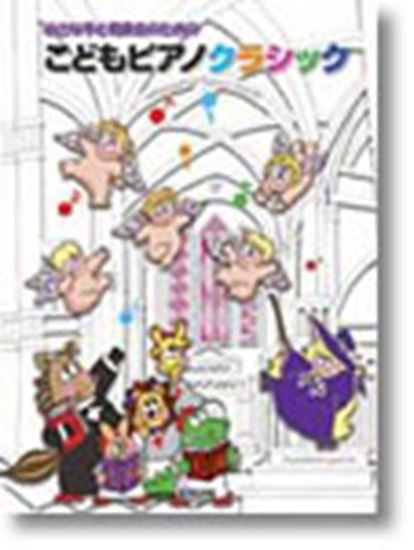Schumann, Robert : Kinderszenen Op.15
Work Overview
Publication Year:1839
First Publisher:Breitkopf und Härtel
Instrumentation:Piano Solo
Genre:pieces
Total Playing Time:17 min 20 sec
Copyright:Public Domain
Commentary (2)
Author : PTNA Piano Encyclopedia Editorial Department
Last Updated: January 1, 2010
[Open]
Author : PTNA Piano Encyclopedia Editorial Department
Kinderszenen, Op. 15 (Scenes from Childhood)
(13 pieces in total)
Although this collection bears the title ‘Kinderszenen’ (Scenes from Childhood), the pieces are not necessarily easy for children to perform. Rather, they are a meticulous portrayal of children's daily lives as observed by adults, standing as a prime example of Schumann's extraordinary talent for descriptive and expressive power. While children sometimes perform these pieces due to the absence of complex figurations in any of them, expressing the content demanded by each piece requires an extremely high level of expressive ability.
- “Of Foreign Lands and Peoples” / "Von fremden Ländern und Menschen"
A child listening to stories of lands they have never visited. The longing for foreign countries is depicted fantastically. - “Curious Story” / "Curiose Geschichte"
This is a rhythmic and lively story, revealing a child's aroused curiosity. - “Blind Man's Bluff” / "Hasche-Mann"
Active children running around playing tag. - “Pleading Child” / "Bittendes Kind"
- “Perfect Happiness” / "Gluckes genug"
- “An Important Event” / "Wichtige Begebenheit"
- “Träumerei” / "Träumerai"
- “By the Fireside” / "Am Camin"
- “Knight of the Hobbyhorse” / "Ritter vom Steckenpferd"
- “Almost Too Serious” / "Fast zu ernst"
- “Frightening” / "Fürchtenmachen"
- “Child Falling Asleep” / "Kind im Einschlummern"
- “The Poet Speaks” / "Der Dichter spricht"
The dream world of childhood slowly unfolds. Midway through, the poet appears in recitative, gently narrating the story of “Of Foreign Lands and Peoples.”
Author : Chong, Riyo
Last Updated: April 27, 2019
[Open]
Author : Chong, Riyo
General Overview
This work, the most popular among Schumann's piano solo pieces, consists of 13 short pieces, each with a descriptive title. It was composed over approximately one month, from February 12 to March 17, 1838 (Pieces No. 6 and No. 9 may have been completed in the autumn of 1837). From Schumann's diary, several more specific composition dates can be traced: February 17: "Composed two or three small, lovely Kinderszenen at night." February 24: "Composed the piece 'Träumerei'." February 25: "Composed again from Kinderszenen, F major, very beautiful, at night." March 11: "Composed 'Glückes genug' and the Polonaise from Novelletten."
On March 17, having completed the work, Schumann wrote the following in a letter to his fiancée, Clara Wieck (1819-96): "You once wrote that I sometimes appear like a child in your eyes, and those words lingered... So I wrote about 30 small pieces. From those, I selected 12 and named them Kinderszenen. You will be pleased with them. However, forget that you are a virtuoso." This explains that approximately 30 short pieces were initially composed, and from these, 12 were selected for Kinderszenen. Thus, at this point, the work was conceived as a 12-piece collection. Ultimately, Kinderszenen became a 13-piece collection, with the final piece, 'Der Dichter spricht,' known to have been added, though it is unknown when or how it came to be included in the collection. It is presumed that several pieces not included in Kinderszenen from the initial 30 compositions were later incorporated into Bunte Blätter Op. 99 (published 1851) and Albumblätter Op. 124 (published 1853).
There is another important point regarding its genesis: there was a period when this work was conceived as an appendix to Novelletten Op. 21. Novelletten is a collection of eight pieces, published in its entirety in 1839, with its approximate composition period being January to April 1838, concurrent with Kinderszenen. The aforementioned diary entry from March 11 indeed indicates that both works were being composed simultaneously. The printer's manuscript for Novelletten bears the title "Novelletten for Piano, dedicated with friendship by Robert Schumann to Frédéric Chopin, Book 2, with an appendix of Children's Stories, Op. 16," and the crossed-out part "Children's Stories" refers precisely to Kinderszenen. From this, it can be inferred that Schumann initially planned this work as an appendix to Novelletten but later changed his mind to publish it separately, hence the deletion. The fact that these two distinct works were, in fact, related is noteworthy for understanding the composition.
Due to its title and musical character, this work is often misunderstood as being "for children," but according to Schumann, it is "recollections of an older person and for older people." Franz Liszt (1811-86) also interpreted it as "a work like a story to be read to children, as it is probably too difficult for children to play." This work, embodying Schumann's longing for the world of childhood, is thus for adults recalling their early years. Furthermore, it is plausible that Schumann's envisioned happy family life with Clara is also projected here. Finally, regarding the titles given to each of the 13 pieces, Schumann stated that they "were added after each piece was completed, and were merely given as hints for performance and interpretation."
Analysis of Each Piece
- No. 1: Of Foreign Lands and Peoples
G major, 2/4 time. ABA ternary form. It proceeds throughout in three voices. The theme, repeatedly appearing in the upper voice of the right hand, is developed in the lower voice of the left hand in the middle section. It evokes the image of a child dreaming of unseen foreign lands. - No. 2: A Curious Story
D major, 3/4 time. Just when one expects a rhythmic and lively character with ornaments, rests, and dotted notes, a soft, legato melody with long phrases suddenly appears. One should enjoy the contrast between these two alternating sections. - No. 3: Blind Man's Bluff
B minor, 2/4 time. ABA ternary form. The staccato melody in the right hand, marked with sforzando-piano and accents, is striking, truly resembling a child desperately running away from the 'it.' At the end of the middle section, the left hand has a chromatic ascending figure with its first sforzando, evoking a scene where the child is almost caught by the 'it.' - No. 4: Pleading Child
D major, 2/4 time. A clear connection to the theme of No. 1 can be observed. It depicts a child sweetly pleading repeatedly. As if to express an unfulfilled desire, the piece ends on a D major dominant seventh chord. - No. 5: Happy Enough
A major, 3/4 time. The unfulfilled feeling that ended on the dominant in No. 4 is finally resolved to the tonic of the dominant key at the beginning of this piece, thus fulfilling the title. The right-hand theme is imitated by the left hand, progressing contrapuntally. - No. 6: An Important Event
A major, 3/4 time. ABA ternary form. The piece generally progresses in chords. It is a powerful work with a rich, resonant sound. In the middle section, the left hand plays an active role with octave progressions. - No. 7: Träumerei
F major, 4/4 time. 'Träumerei' refers to 'dreaming' or 'reverie.' The atmosphere changes completely from the previous piece, exuding a calm and dreamy air, as the title suggests. Schumann avoids a strong beat on the first beat and blurs the 4/4 meter, thereby creating the dreamy character of this piece. The piece closes with a four-bar melody in four voices, repeated eight times with changing harmonies. How to make these eight repetitions captivating will be a test of the performer's skill. - No. 8: At the Fireside
F major, 2/4 time. In the same F major as No. 7, the piece begins similarly with an ascending fourth from C to F. The connection to the previous piece is evident. - No. 9: Knight of the Hobbyhorse
C major, 3/4 time. The right hand maintains a consistent rhythmic figure throughout. A rest on the first beat, followed by syncopation, and an accent on the third beat, demonstrate Schumann's rhythmic ingenuity. - No. 10: Almost Too Serious
G-sharp minor, 2/8 time. Following No. 9, the piece quietly unfolds with syncopation. The 'ernst' in the original title 'Fast zu ernst' means 'serious' or 'earnest.' Is a child earnestly engaged in something? - No. 11: Frightening
G major, 2/4 time. A contrasting piece where a slow and gentle main theme alternates with rapid, playful interjections. In the four appearances of the main theme, the right-hand melody is imitated by the left hand. - No. 12: Child Falling Asleep
E minor, 2/4 time. ABA ternary form. In the A section, centered around B, the same rhythm is alternately repeated by the right and left hands, and this cradle-like motion leads the listener into a drowsy state. In the B section, it modulates to the parallel major, E major. The piece ends quietly throughout, without resolving to the tonic chord, as if the world of sleep extends infinitely. - No. 13: The Poet Speaks
G major, 4/4 time. ABA ternary form. The B section features a recitative, and it has been noted that this melody is quoted from the inner voice of No. 2, 'Aufschwung,' from Fantasiestücke Op. 12. Schumann often reuses material and melodies from one work in others, and this is considered another example. Clara commented on this piece, saying, "Is not the poet speaking in this piece my beloved one?" suggesting she interpreted the title's 'poet' as Schumann himself.
Movements (13)
"Von fremden Landern und Menchen" Op.15-1
Key: G-Dur Total Performance Time: 1 min 30 sec
"Ritter vom Steckenpferd" Op.15-9
Key: C-Dur Total Performance Time: 0 min 40 sec
"Kind im Einschlummern" Op.15-12
Key: e-moll Total Performance Time: 2 min 00 sec
"Der Dichter spricht" Op.15-13
Key: G-Dur Total Performance Time: 2 min 30 sec
PTNA & Partner Channel Videos(124items) View More
Sheet MusicView More
Scores List (200)
![やさしいピアノ名曲集2[発表会用/CD付] - 楽譜表紙画像](https://ptna-assets.s3.ap-northeast-1.amazonaws.com/enc/books/46.jpg)
(株)エー・ティ・エヌ

(株)エー・ティ・エヌ
![子どものピアノ小曲集3[発表会用]/CD付 - 楽譜表紙画像](https://ptna-assets.s3.ap-northeast-1.amazonaws.com/enc/books/55.jpg)
(株)エー・ティ・エヌ

(株)全音楽譜出版社

(株)ドレミ楽譜出版社

(株)全音楽譜出版社

KMP(ケイ・エム・ピー) ケイエムピー

(株)シンコーミュージックエンタテイメント

(株)全音楽譜出版社

(株)ドレミ楽譜出版社

(株)音楽之友社

(株)オンキョウパブリッシュ〇

(株)全音楽譜出版社

(株)ヤマハミュージックエンタテインメントホールディングス

(株)全音楽譜出版社

(株)全音楽譜出版社

(株)全音楽譜出版社

(株)ヤマハミュージックエンタテインメントホールディングス

(株)ドレミ楽譜出版社

(株)全音楽譜出版社

(株)ヤマハミュージックエンタテインメントホールディングス

(株)ドレミ楽譜出版社

(株)ドレミ楽譜出版社

(株)ドレミ楽譜出版社

KMP(ケイ・エム・ピー) ケイエムピー

(株)音楽之友社

(株)リットーミュージック

KMP(ケイ・エム・ピー) ケイエムピー

KMP(ケイ・エム・ピー) ケイエムピー

(株)ヤマハミュージックエンタテインメントホールディングス

ミュージックランド

(株)全音楽譜出版社

(株)サーベル社

KMP(ケイ・エム・ピー) ケイエムピー

ミュージックランド

(株)ヤマハミュージックエンタテインメントホールディングス

(株)ドレミ楽譜出版社

(株)共同音楽出版社

ミュージックランド

(株)オンキョウパブリッシュ〇

(株)リットーミュージック

KMP(ケイ・エム・ピー) ケイエムピー

ミュージックランド

(株)ドレミ楽譜出版社

ミュージックランド

(株)シンコーミュージックエンタテイメント

ミュージックランド

ミュージックランド

(株)リットーミュージック

(株)ドレミ楽譜出版社

(株)自由現代社

(株)シンコーミュージックエンタテイメント

(株)リットーミュージック

ミュージックランド

(株)ドレミ楽譜出版社

KMP(ケイ・エム・ピー) ケイエムピー

(株)シンコーミュージックエンタテイメント

(株)シンコーミュージックエンタテイメント

(株)学研プラス

(株)オンキョウパブリッシュ〇

ミュージックランド

KMP(ケイ・エム・ピー) ケイエムピー

(株)全音楽譜出版社

(株)ドレミ楽譜出版社

ミュージックランド

(株)ドレミ楽譜出版社

(株)シンコーミュージックエンタテイメント

(株)ドレミ楽譜出版社

(株)シンコーミュージックエンタテイメント

ミュージックランド

ミュージックランド

(株)シンコーミュージックエンタテイメント

(株)リットーミュージック

(株)ドレミ楽譜出版社

ミュージックランド

(株)ドレミ楽譜出版社

(株)シンコーミュージックエンタテイメント

(株)ドレミ楽譜出版社

(株)シンコーミュージックエンタテイメント

(株)ヤマハミュージックエンタテインメントホールディングス

カワイ出版

ハンナ(ショパン)

ハンナ(ショパン)

ミュージックランド

ミュージックランド

(株)ドレミ楽譜出版社

(株)シンコーミュージックエンタテイメント

(株)ヤマハミュージックメディア

(株)シンコーミュージックエンタテイメント

ハンナ(ショパン)

ハンナ(ショパン)

(株)ドレミ楽譜出版社

(株)ヤマハミュージックエンタテインメントホールディングス

(株)ドレミ楽譜出版社

(株)シンコーミュージックエンタテイメント

(株)ヤマハミュージックエンタテインメントホールディングス

(株)シンコーミュージックエンタテイメント

KMP(ケイ・エム・ピー) ケイエムピー

(株)シンコーミュージックエンタテイメント

ハンナ(ショパン)

ハンナ(ショパン)

(株)ヤマハミュージックエンタテインメントホールディングス

KMP(ケイ・エム・ピー) ケイエムピー

KMP(ケイ・エム・ピー) ケイエムピー

ハンナ(ショパン)

ハンナ(ショパン)

(株)オンキョウパブリッシュ〇

KMP(ケイ・エム・ピー) ケイエムピー

KMP(ケイ・エム・ピー) ケイエムピー

(株)シンコーミュージックエンタテイメント

デプロMP

成美堂出版(株)

(株)ドレミ楽譜出版社

(株)ヤマハミュージックエンタテインメントホールディングス

(株)ヤマハミュージックエンタテインメントホールディングス

ミュージックランド

(株)シンコーミュージックエンタテイメント

(株)ヤマハミュージックエンタテインメントホールディングス

(株)共同音楽出版社

(株)ドレミ楽譜出版社

KMP(ケイ・エム・ピー) ケイエムピー

ミュージックランド

(株)シンコーミュージックエンタテイメント

デプロMP

(株)サーベル社

ミュージックランド

(株)ヤマハミュージックエンタテインメントホールディングス

(株)全音楽譜出版社

ミュージックランド

(株)シンコーミュージックエンタテイメント

(株)シンコーミュージックエンタテイメント

ミュージックランド

(株)全音楽譜出版社

(株)シンコーミュージックエンタテイメント

KMP(ケイ・エム・ピー) ケイエムピー

(株)シンコーミュージックエンタテイメント

(株)シンコーミュージックエンタテイメント

ミュージックランド
![小学生のための ピアノ名曲集B [バイエル終了程度] - 楽譜表紙画像](https://ptna-assets.s3.ap-northeast-1.amazonaws.com/enc/books/1764.jpg)
(株)シンコーミュージックエンタテイメント

ミュージックランド

(有)中央アート出版社

(株)オンキョウパブリッシュ〇

ミュージックランド

(株)シンコーミュージックエンタテイメント

(株)シンコーミュージックエンタテイメント

(株)シンコーミュージックエンタテイメント

KMP(ケイ・エム・ピー) ケイエムピー

(株)シンコーミュージックエンタテイメント

(株)ドレミ楽譜出版社
![ビギナーのためのピアノ/名曲シリーズ1 [ピアノソロ] - 楽譜表紙画像](https://ptna-assets.s3.ap-northeast-1.amazonaws.com/enc/books/1852.jpg)
ハンナ(ショパン)

(株)ヤマハミュージックエンタテインメントホールディングス

(株)東音企画(バスティン)

プリズム((株)あいおんプリズム事業部)

(株)ヤマハミュージックエンタテインメントホールディングス

(有)中央アート出版社

(株)ヤマハミュージックエンタテインメントホールディングス

(株)ドレミ楽譜出版社

(株)学研プラス

(株)ヤマハミュージックエンタテインメントホールディングス

Neil A. Kjos Music Company

Neil A. Kjos Music Company

Neil A. Kjos Music Company

Neil A. Kjos Music Company

Neil A. Kjos Music Company

Neil A. Kjos Music Company

Neil A. Kjos Music Company

Neil A. Kjos Music Company

Neil A. Kjos Music Company

Neil A. Kjos Music Company

Neil A. Kjos Music Company

Neil A. Kjos Music Company

Neil A. Kjos Music Company

Musikverlag Doblinger

Musikverlag Doblinger

Musikverlag Doblinger

Musikverlag Doblinger

Breitkopf & Hartel

Breitkopf & Hartel

Breitkopf & Hartel

Breitkopf & Hartel

Breitkopf & Hartel

Breitkopf & Hartel

Breitkopf & Hartel

Breitkopf & Hartel

Breitkopf & Hartel

Breitkopf & Hartel

Breitkopf & Hartel

Breitkopf & Hartel

Breitkopf & Hartel

ミュッセ




























